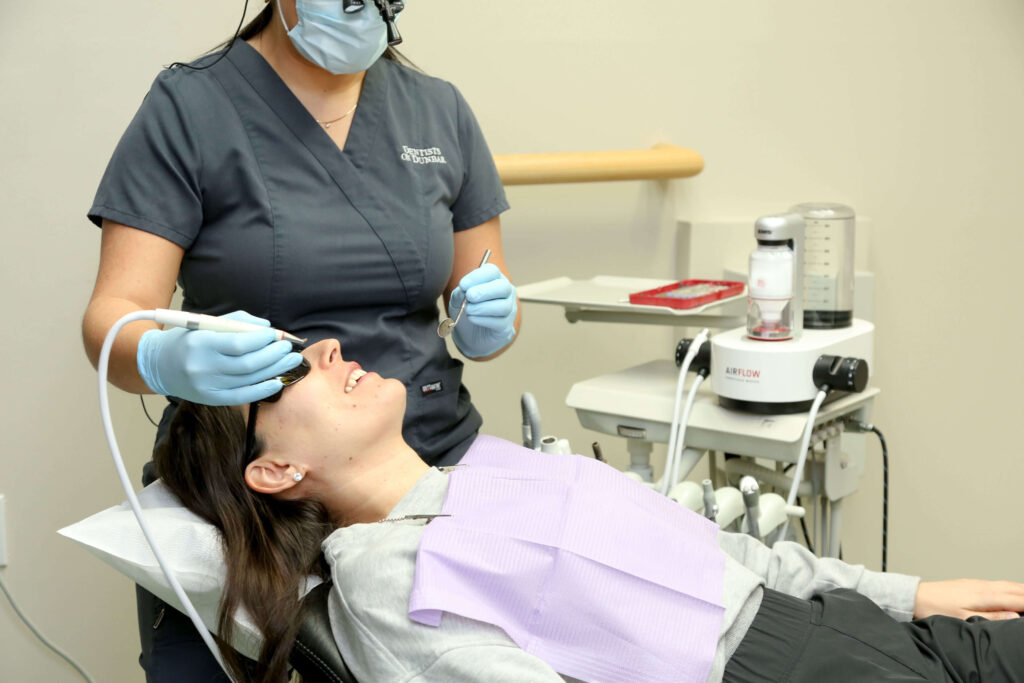
EMS AIRFLOW® specialty equipment.
Dental Exam
At your first dental visit a complete dental exam will be done by your dentist. At that time and at following regular check-up exams, your dentist and hygienist will include:
- Diagnostic x-rays (radiographs): to find decay, tumours, cysts, bone loss and toothpositions.
- Oral cancer screening: to check your face, neck, lips, tongue, throat, tissues, and gums for any signs of oral cancer.
- Gum disease evaluation: to check your gums and bone around your teeth for any signs of periodontal (gum) disease.
- Examination of tooth surfaces: to check for decay with special dental instruments.
- Examination of existing restorations: to check your fillings, crowns, veneers etc.
- Examinations of your occlusion (how your teeth fit and function together) as well as a thorough assessment of your tempero mandibular joint.
Professional Dental Cleaning
Professional dental cleanings (scaling, root planing and polishing) are done by Registered Dental Hygienists. Your cleaning appointment will include a dental exam by the dentist and:
- Removal of calculus (tartar): Calculus is hardened plaque that has formed on the tooth and will be firmly attached. Calculus forms above and below the gum line, and can be removed with appropriate dental instruments.
- Removal of plaque: Plaque is a sticky, almost invisible film that forms on the teeth. It is a growing colony of living bacteria, food debris, and saliva. The bacteria produces toxins that inflame the gums. This inflammation is the start of periodontal disease and can effect your general health!
- Teeth polishing: Remove stain and plaque that is not otherwise removed during tooth brushing and scaling.
Digital Dental X-Rays
Digital x-rays, also known as digital radiography, are the latest in dental x-ray technology. Digital x-rays use a digital image capture device instead of x-ray film. This technique saves time as there is no need to develop film images, and produces images that have a better resolution than standard dental x-ray machines. Digital x-rays also emit lower levels of radiation as images are produced electronically. We utilized both intraoral and panoramic digital X-rays.
Digital X-rays can be used to detect abscesses, malignant or benign masses, bone loss, and cavities that are not visible during a visual examination. These x-rays are safe and effective for both adults and children; however it is wise to speak with us if you are pregnant or nursing before proceeding with x-rays.
Dental radiographs (x-rays) are essential, preventative, diagnostic tools that provide valuable information not visible during a regular dental exam. We use this information to safely and accurately detect hidden dental abnormalities and complete an accurate treatment plan. Without x-rays, problem areas may go undetected.
Dental x-rays may reveal:
- Abscesses or cysts
- Bone loss
- Cancerous and non-cancerous tumors
- Decay between the teeth
- Developmental abnormalities
- Poor tooth and root positions
- Problems inside a tooth or below the gum line
Finding and treating dental problems at an early stage can save you time, money, unnecessary discomfort, and your teeth!
